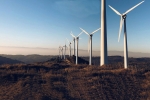Mass transportation infrastructure: Weak attractiveness of public transportation
This article has been translated by PwC Indonesia as part of our Indonesia Infrastructure News Service. PwC Indonesia has not checked the accuracy of, and accepts no responsibility for the content.
Bisnis Indonesia - Infrastruktur angkutan massal: Lemah daya tarik transportasi publik
28 August 2023
By: Anitana Widya Puspa
The government has realised and understood that public transportation passengers are lacking due to several unresolved basic infrastructure issues in public services.
There are several studies regarding transportation organisation. There is also the integrated infrastructure development roadmap, especially regarding integrated infrastructure development in the capital city.
The problem is the slow execution. The budget limitation issue is often prioritised.
However, there are also economic and business interests that are making policies stagnant.
According to Road Traffic Director of the Land Transportation Directorate General of the Transportation Ministry Cucu Mulyana, the lack of the public’s interest in public transportation is due to the first mile issue where passengers need to travel from their residences to the mass transportation transit location and the last mile issue where passengers need to travel from the mass transportation transit location to their destinations.
Public transportation organisation needs a real handling.
“The first mile and the last mile issues are making public transportation lose their attractiveness. It is one of our homework. A homework that is faced by all major cities in Indonesia. So, what must be done is public transportation organisation. We start with MRT, LRT, BRT in several provinces, cities, and regencies with congested transportation,” he stated.
He said that the organisation would start with the World Bank’s programme that is financed by grants from the Swiss government and the German government.
“We want BRT [bus rapid transit] and type A terminals to not lose to airports,” he said.
Based on the data he collected, people in major cities, such as Jakarta, Bandung, and Medan, that rely on public transportation are still under 20%.
He made comparisons with Singapore and Tokyo where most or 50% of the people use public transportation. The people in Kuala Lumpur and Bangkok that use public transportation have also reached around 20%-50%.
With the lack of public transportation users and the surge in the automotive industry growth in the last five years that reaches 8%, it is a given that Jakarta is a congested city with an air pollution rate that continues to rise.
Cucu admits that it is not easy to handle traffic in major cities, especially in agglomeration areas.
Meanwhile, Transportation and Infrastructure Deputy Coordinator of the Coordinating Ministry of Maritime Affairs and Investment Rachmat Kaimuddin stated that the largest contributors to air pollution that is currently overshadowing Jakarta were the transportation sector, the industrial sector, and power plants.
“Currently, there are around 40 million motor vehicles in Jakarta, where most use fossil fuel. Fundamentally, air pollution also comes from incomplete combustion,” he said on Thursday (24/8).
Besides motor vehicles, there are also coal-fired power plants (PLTUs) and thousands of industries.
Hence, he continued that the government was continuously focusing on reducing activities that prompt combustions and dust particles, such as by encouraging electric public transportation and electric private vehicles.
“We are encouraging public transportation. Later, our task with Jakarta Provincial Government and other institutions is to accelerate the plan of the regional government to increase the use of electric buses and private electric vehicles,” he said.
Besides electric public transportation, Rachmat is also encouraging the people to use electric private vehicles. The government has launched various programmes regarding this matter, including a Rp7 million incentive for every purchase of electric motorcycle.
“Next week, a revised regulation will be issued that allows everyone, as long as they have an ID card and are 17 years old, to receive support from the government to purchase electric vehicles. The government will also provide support for the people who want to convert their motorcycle from a conventional motorcycle to an electric motorcycle,” Rachmat said.
Next Article: Inaugurated today, LRT serves the public right away
















